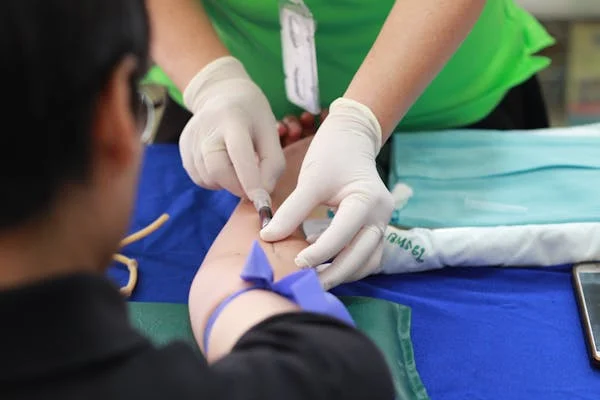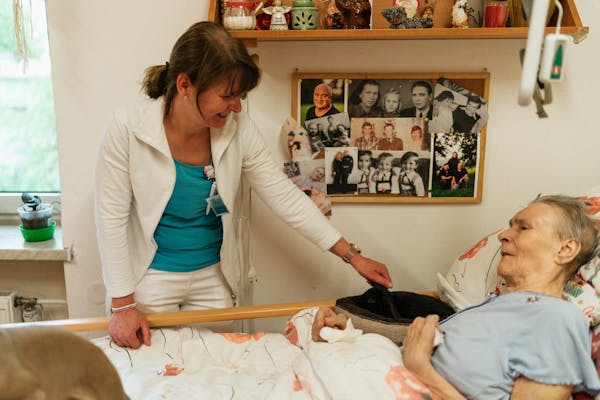
Dementia is a syndrome caused by acquired organic damage to the brain.
This condition involves continuous and permanent changes in memory, how people think, speak and learn. Additional symptoms include changes in the emotional and mental sphere of a person. Ultimately, dementia leads to complete social and everyday helplessness and personality degradation. A person with this requires constant care and supervision, so the disease affects not only the patient, but also his relatives.
Contrary to popular belief, dementia is not a natural manifestation of the aging of the body. Physiological aging is indeed accompanied by a decrease in the ability to learn, memorize and reproduce new information. At the same time, an elderly person may not be forgetful of current or distant events from the past, as well as general knowledge acquired at a young age. Age-related decline in cognitive functions is a natural process caused by the peculiarities of the brain and nervous system as a whole.
Dementia is always a consequence of diseases that occur with damage to the central nervous system. Unlike physiological aging, it is accompanied by a progressive decline in cognitive functions and leads to the destruction of personality.
Causes of Dementia
As a rule, dementia develops against the background of neurodegenerative diseases of the central nervous system (CNS).
These include:
- Alzheimer’s disease leads to the breakdown of neurons in both the cerebral cortex and some subcortical regions of the brain;
- In Pick’s disease, parts of the frontal and temporal cortex in the brain are destroyed.
- Huntington’s chorea is a result of shrinking in the corpus striatum and the cerebral cortex.
- corticobasal degeneration – destruction of the frontal-parietal cortex and some structures of the extrapyramidal system (basal ganglia, substantia nigra).
The second group of causes of dementia development are vascular pathologies, primarily vascular atherosclerosis.
And finally, sometimes it develops with other diseases and conditions, such as:
- brain injuries and trauma;
- benign and malignant neoplasms of the central nervous system;
- epilepsy;
- encephalitis and encephalopathy of various origins;
- multiple sclerosis;
- some hereditary diseases;
- long-term use of certain medications
- alcohol addiction;
- endocrine diseases and metabolic disorders.
- Anxity , depression, auto aggresion , irritation ,apathy and isolation .
Most clinicians see that it is mostly linked to two brain disorders called Alzheimer’s disease and dementia with Lewy bodies; atherosclerosis in the blood vessels; and stroke. All other causes of its development account for only a small share.
Please note!
The exact causes of these diseases remain unclear. There are many hypotheses about their origin, but none of them fully answers the questions. Currently, researchers agree that genetic mutations play a leading role in the development of diseases.
Pathogenesis or mechanism of development
Neurodegenerative diseases are accompanied by proteinopathy – accumulation of specific proteins in the brain: Aβ42 fraction of beta-amyloid and tau protein. These proteins are deposited in the structures of the brain and form plaques, leading to dysfunction and destruction of the normal structure of the nervous tissue. In degenerative diseases of the central nervous system, the synthesis of the neurotransmitter acetylcholine is also disrupted. Its main function is to transmit impulses between neurons.
Atherosclerosis of the cerebral vessels is characterized by the formation of atherosclerotic plaques on the walls of the arteries. As a result, the lumen of the vessels narrows and normal blood circulation in the brain is disrupted.
Dementia refers to a condition that slowly worsens, is neurologic and mostly occurs in elderly people with memories of older individuals becoming weak, their ability to think impaired and disabilities in performing daily activities. It is usually associated with mental and cardiovascular diseases. Alzheimer is the most usual trigger of dementia whereas vascular dementia is present in patients with a record of stroke, BP pressure, or coronary artery disease.
A number of cardiovascular disorders including atrial fibrillation, heart failure, ischemic heart disease, atherosclerosis, and congestive heart failure play a major role in enhancing cognitive decline. Moreover, psychiatric illnesses such as depression, bipolar and anxiety disorders may increase the severity of dementia or lead to its early development. Moreover, Parkinson disease, Lewy body dementia and chronic traumatic encephalopathy are all conditions of the nervous system that could be overlapping or similar to those of dementia. Coronary health and psychological well-being should also be taken care of to alleviate the risk and development of dementia.
Dementia can be a consequence of acute cerebrovascular accident – stroke. Due to a sharp and pronounced lack of oxygen, a site of nerve cell necrosis is formed. The death of neurons is irreversible, and dead nerve tissue is no longer able to perform its functions. If the damaged area and its volume are large, the outcomes could be much more severe.
Types of dementia

Depending on the localization of the compulsive procedure in the brain, the subsequent kinds of dementia are illustrious:
- cortical – clinical symptoms are caused by atrophy of the cerebral cortex;
- subcortical – various structures of the brain located under the cortex are subject to atrophy and degeneration;
- subcortical-cortical – mixed type of dementia;
- multifocal – multiple lesions of all parts of the fundamental nervous system.
Giving to the cause of rate, the subsequent are illustrious:
- vascular dementia
- post-stroke dementia
- alcoholic dementia
- epileptic dementia
- sexual dementia
Senile dementia is considered an independent clinical form – profound cognitive impairment in elderly people/
Clinical picture

Dementia has several successive stages of development. At the initial stages, it often remains unrecognized. This is due to the fact that memory and thinking disorders are expressed insignificantly, and are perceived by relatives and the patient himself as age-related changes.
Early dementia
The main symptoms of the early phase of its are:
- difficulties in education, mastering new information or acquiring new skills;
- difficulty or incapacity to helplessly achieve compound average tasks;
- lability (changeability) of mood;
- sporadic and short-term troubles of placement in familiar areas;
- deterioration of memory and thought processes.
Moderate dementia
At the next stage, the symptoms become increasingly noticeable to others. Cognitive impairments progressively increase, and forgetfulness of recent events and names of people from the usual social circle appears. Aphasia takes over, reducing a person’s speech and making it difficult to express thoughts with words.
A patient with dementia has a disturbed orientation at home, which leads to difficulties in performing any household tasks. At the same time, he remains able to independently satisfy his basic physiological needs. Mood or behavioral disorders worsen. Relatives begin to notice sharp mood swings, excessive suspiciousness, pickiness or grumpiness.
As the disease progresses, acute psychotic symptoms may appear. They may be represented by attacks of unmotivated aggression, various delusions, auditory or visual hallucinations.
Terminal stage
In the terminal stages of its , a gradual disintegration of personality occurs. Late clinical manifestations include:
- loss of ability to care for oneself;
- inability to navigate in terrain, space and time;
- decreased physical activity;
- total aphasia;
- inability to recognize close friends and family members;
- impairment of recognition of objects, sounds and phenomena;
- personality changes and psychotic disorders.
The inability to meet the physiological needs of the body and the loss of self-care skills leads to helplessness. A person with severe its cannot be responsible for their actions and needs constant care.
Diagnosis of dementia
When examining a patient with suspected dementia, it is extremely important to carefully collect and analyze the medical history. At the same time, close relatives are invited to talk with the doctor. The doctor collects information from them about the onset of the disease and the first symptoms, as well as the duration of the suspected dementia and the features of its progression.
The next stage of diagnostics is a neuropsychological examination.
Simple but informative tests are used to identify cognitive impairments.
- 5 words: The doctor says 5 simple and frequently used words in everyday life and asks the patient to repeat them. The patient can then proceed to other tests and trials, after which he is again asked to repeat the words he heard earlier.
- Schulte test. The test is conducted using special tables in which numbers from 1 to 25 are randomly arranged. The doctor asks the subject to find all the numbers in order, and then count backwards. The time spent on completing the task is recorded, and the number of errors is taken into account.
- Clock drawing test: The theme is inquired to attraction a clock expression and scratch a specific time on it, for example, 17:20.
For a complete assessment of the patient memory and thinking, special scales and questionnaires are used:
- MMSE (Mental State Examination Scale),
- FAB (Frontal Abnormality Battery),
- CDR (Critical Dementia Rating Scale),
- GDS (General Disorders Scale)
If vascular dementia is suspected, the Khachinsky ischemic scale is used.
The closing phase of diagnostics is workshop and contributory inspection. The main role here is given to neurovisualization. Among the methods of brain examination, the leading role is played by computer or magnetic resonance imaging.
Treatment of dementia

There is still no specific pathogenetic therapy for dementia. Treatment is primarily aimed at preventing the growth of cognitive deficit and correcting existing changes. Therapy is compound and involves of medicine and non-drug approaches. General principles of treatment are as follows:
- daily physical and social activities;
- improving the quality of life;
- ensuring safe living conditions and social well-being;
- correction of cognitive and behavioral disorders;
- treatment of concomitant diseases.
In medicine, there is a term basic drug therapy for dementia. It includes the main groups of drugs that can be prescribed to patients with dementia. These include:
- acetylcholinesterase inhibitors;
- NMDA receptor antagonists;
- neuroprotectors and neurometabolites.
The first group of drugs improves cognitive functions by blocking the action of acetylcholinesterase. This enzyme is responsible for the destruction of acetylcholine, one of the main neurotransmitters of the central nervous system. The first group of drugs directly affects specific receptors in the nervous tissue and accelerates the transmission of impulses along neurons.
The group of neuroprotectors and neurometabolites is represented by a large number of drugs. The general mechanism of their action is associated with the improvement of metabolic processes in the nervous tissue, antioxidant effect and protection of neurons from the negative impact of various aggressive factors.
Educational work with the relatives of patient is of great importance in the comprehensive treatment of the disease. In severe dementia, all responsibility for care falls on their shoulders, so relatives are taught the basics of behavior and communication with the patient. Some family members may need psychological help.
Prognosis for dementia
Unfortunately, the disease cannot be cured. However, with timely complex action, it is possible to slow down the degenerative process so that a person reaches the terminal stage as late as possible.
Prevention of dementia
There is no specific prevention, but there are recommendations for slowing down the pathological process:
- do sports, minimal physical activity helps improve blood supply to the brain, reduce blood pressure, and also helps increase tissue tolerance to glucose, increases the thickness of the cerebral cortex;
- healthy eating (especially the Mediterranean diet, rich in antioxidants, omega-3, 6 fatty acids, vitamins);
- regular mental work – slows down the development of cognitive disorders in patients with dementia;
- Hormone replacement therapy in women. There is evidence that hormone therapy correlates with a one-third reduction in the risk of developing dementia;
- lowering and controlling blood pressure;
- Reduction and control of serum cholesterol levels. An growth in blood saturated fat above 6.5 mol/l growths the menace of unindustrialized of Alzheimer disease by 2 times.
Answers to questions
Is dementia hereditary?
We do not yet know exactly how dementia develops. But, it is pure that there is a inherited disposition.
How does dementia begin?
Dementia has several successive stages of development. At the initial stages, it often remains unrecognized. This is due to the fact that memory and thinking disorders are expressed insignificantly, and are perceived by relatives and the patient himself as age-related changes.
Does dementia occur at a young age?
In the case of the development of a number of diseases this is possible, but most often we still talk about dementia as an age-related disease.
How does dementia manifest itself?
Dementia has several successive stages of development. At the initial stages, it often remains unrecognized. This is due to the fact that memory and thinking disorders are expressed insignificantly, and are perceived by relatives and the patient himself as age-related changes.
How long do people live with a diagnosis of senile dementia?
There is no clear answer to this question, everything depends on the individual characteristics of the body, on how much we compensate for this situation. It is important,
